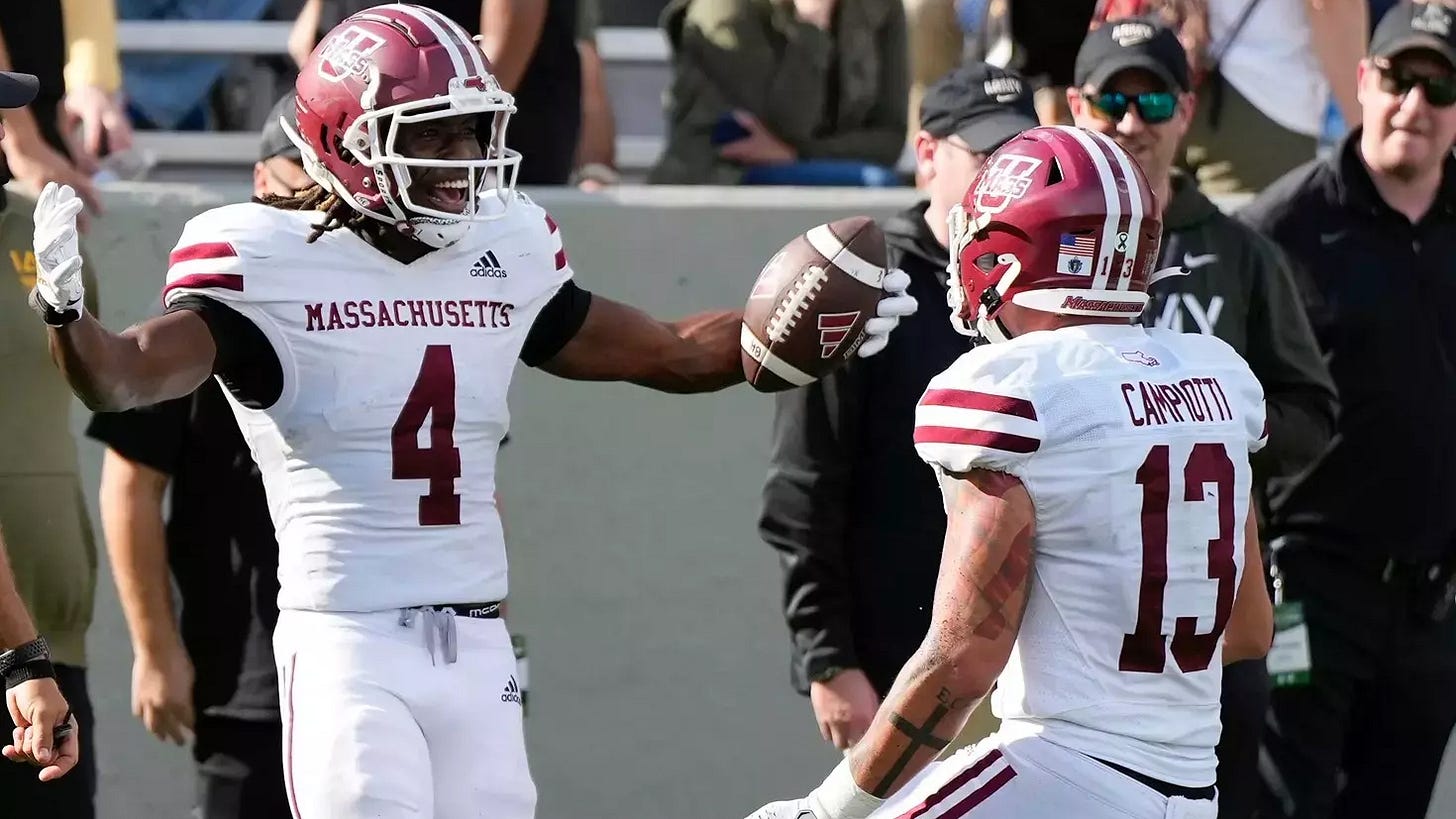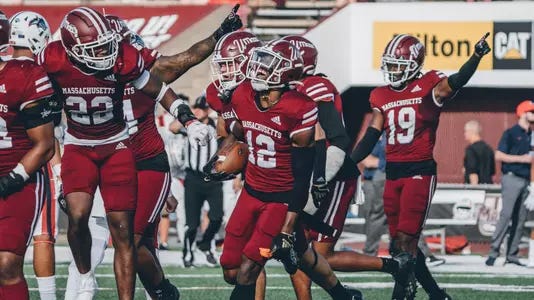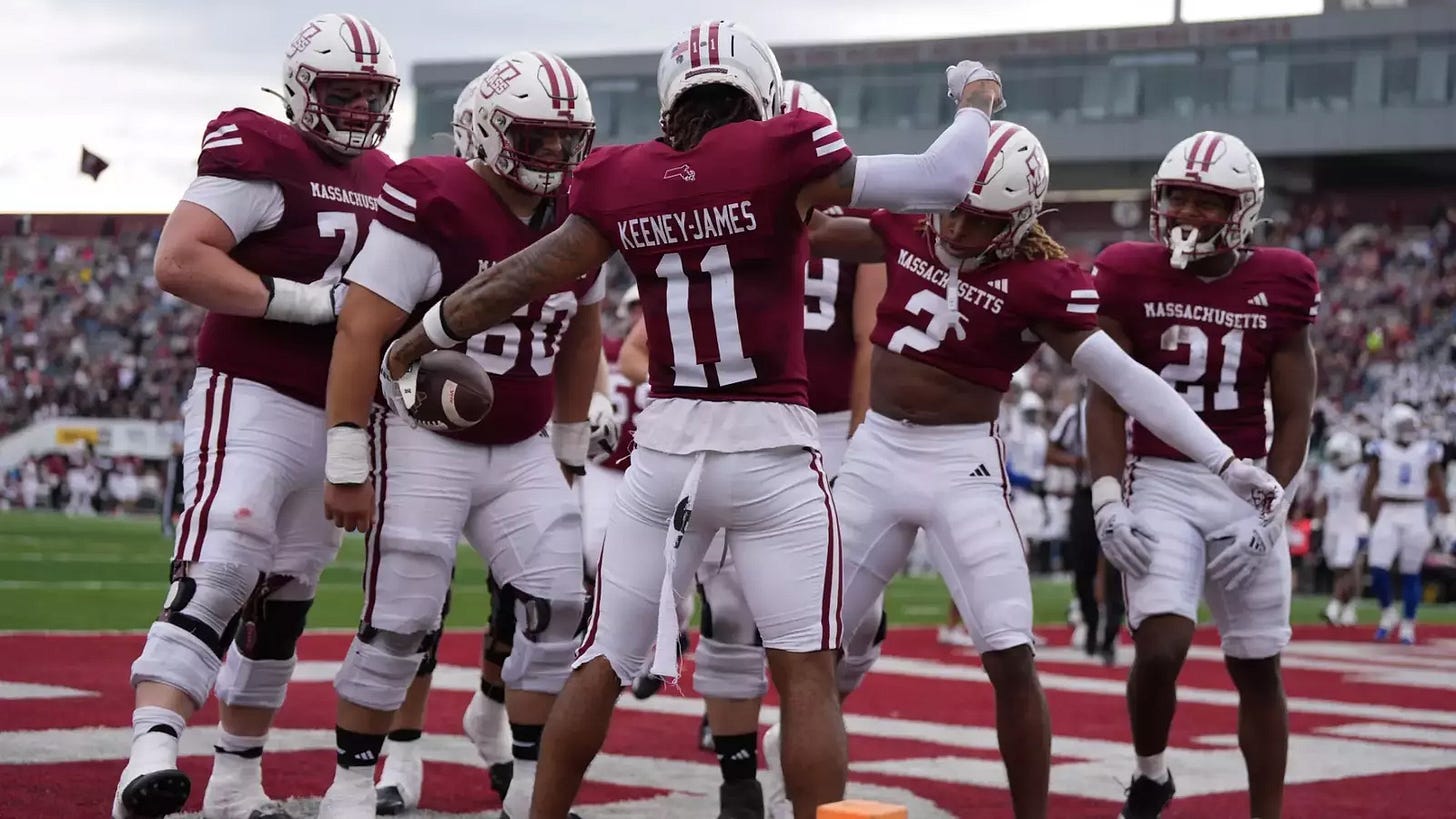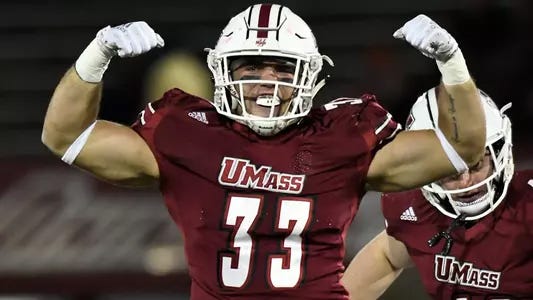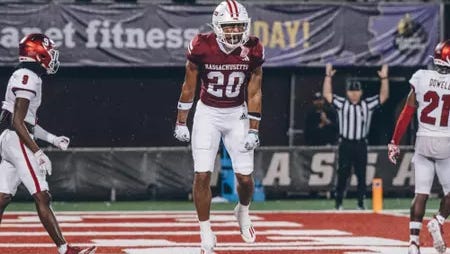UMass Well-Positioned For New NIL Era
NIL has changed College Football & as those changes continue, UMass should benefit.
The secret to winning in college football is no longer much of a secret —it’s money, and lots of it. The programs with the most funding will usually find the most success. The new world of players going to the highest bidder has created a segregated landscape across the country.
With a new NCAA settlement receiving preliminary approval back in October and set for a final hearing this April, the landscape is about to receive yet another shakeup.
THE BASICS
The new NCAA settlement, if approved, is set to pay out $2.8 billion to former, current and future student-athletes who have had endorsement opportunities taken away due to NIL restrictions. Almost the entirety of the athletes who will be receiving payments - mostly football and men’s basketball players - will be from Power 4 schools due to the fact that endorsement opportunities aren’t very common with Group of 5 schools, and if they are, the compensation isn’t high.
The NCAA is set to pay $1.1 billion (41%) of the settlement with member institutions on the hook for $1.7 billion (59%). Among the member institutions, Power 4 schools will only pay 40% of that $1.7 billion even though the majority of athletes receiving payments come from those schools. Group of 5 and other non-FBS schools will pay roughly $990 million towards the settlement.
Simply put, the checks the Group of 5 schools are going to have to cut are going to put a much bigger dent in their pockets than those of Power 4 schools. While each Power 4 school will have to pay more than a school like UMass, the money made from their massive media rights deals and other revenue streams make it a much easier pill to swallow for the Ohio States and Georgias of the world.
The expectation is that UMass is set to contribute $400,000-$500,000 annually to the settlement fund. It’s unknown how much other MAC schools will have to pay towards the settlement, but it’s expected to be greater than UMass’ since the Minutemen haven’t been in the Football Bowl Subdivision level as long.
Another component of the settlement is the new revenue-sharing agreement. Student-athletes will no longer be playing for scholarships alone. They will also have an opportunity to earn 22% of the average revenue that power conference schools generate per year, which averages out to $21.5 million. The majority of this money will be paid out to football and men’s basketball players. Each school has the opportunity to opt in or out of revenue sharing, but opting out will put your program behind many others who choose to pay their players.
The pending settlement is also set to replace the 85-scholarship limit with a 105-player roster limit. A football program will have the ability to control how many scholarships it gives out and how much each individual player makes.
HOW IT AFFECTS UMASS
UMass has made tangible moves to prove it’s serious about competing in football, including its participation in the settlement.
The move to the MAC comes at the perfect time for the Minutemen as it will provide an increased revenue stream in terms of the conferences’ media rights deal. UMass will bring in between $1.5-$2.5 million per year under the deal with ESPN. This will help offset some of the cost associated with the settlement payments.
UMass won’t be paying out the full $21.5 million that it is allocated to pay players because it just simply doesn’t have the available funds to do so. But that doesn’t mean the administration isn’t invested in the program’s.
UMass will have $2 million to spend in NIL in 2025, with an increase to $3 million expected in 2026, according to ESPN’s Pete Thamel. The money is guaranteed, which means this isn’t simply a goal the University is striving for.
To go along with player funds, UMass is also giving head coach Joe Harasymiak a pool of over $2.7 million to hire his staff, according to Thamel. It’s the largest staff pool in the MAC by a significant amount.
"It was clear to me that we have outstanding leadership and alignment from the top down that will allow us to compete for MAC championships and to sustain that success," Harasymiak said in a statement.
While $2-3 million won’t sniff what Power-4 schools are doling out each year, it will make UMass more than competitive relative to its MAC peers and make Amherst an attractive destination for those athletes interested in a Group of 5 program.
COMPARED TO THE MAC
In terms of the rest of the MAC, UMass will shoot right to the top of the conference with regard to spending. In the 2022 fiscal year, UMass spent $41.4 million on athletics, which would have led the conference. The next closest school was Buffalo at $39.5 million.
Of the 12 current MAC schools, eight have collectives in place, with funding ranging from $160,000-$928,000. With UMass expecting to have $2 million to spend on football and men’s basketball, the Minutemen should be the clear No. 1 in spending in the conference.
SUPPORT=SUCCESS
First-year head coach Joe Harasymiak had other options this offseason and if he didn’t like any of them, he likely would have had even more options a year from now.
A young coach on Harasymiak’s trajectory has the luxury of being choosy with the opportunities that come his way and will always be looking for a place where he can succeed. In today’s College Football, NIL support is an enormous part of that equation.
So, as UMass pulls up its chair to the MAC, the Minutemen don’t just have the buy-in necessary to sit at the table, they’re instantly one of the conference’s chip leaders, if not the big stack.





